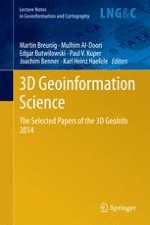2015 | OriginalPaper | Buchkapitel
A Hybrid Approach Integrating 3D City Models, Remotely Sensed SAR Data and Interval-Valued Fuzzy Soft Set Based Decision Making for Post Disaster Mapping of Urban Areas
verfasst von : Iftikhar Ali, Aftab Ahmed Khan, Salman Qureshi, Mudassar Umar, Dagmar Haase, Ihab Hijazi
Erschienen in: 3D Geoinformation Science
Aktivieren Sie unsere intelligente Suche, um passende Fachinhalte oder Patente zu finden.
Wählen Sie Textabschnitte aus um mit Künstlicher Intelligenz passenden Patente zu finden. powered by
Markieren Sie Textabschnitte, um KI-gestützt weitere passende Inhalte zu finden. powered by
